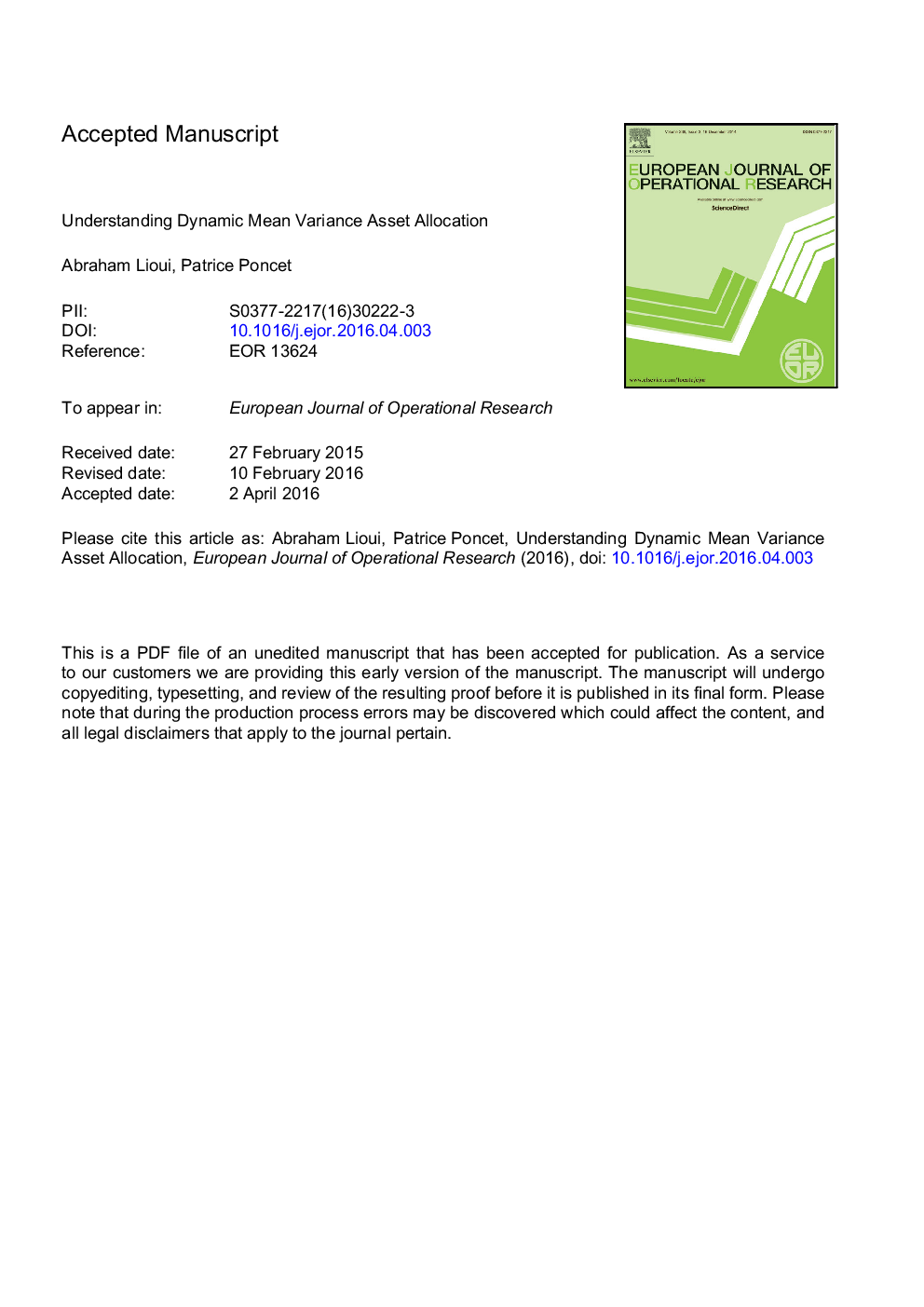| Article ID | Journal | Published Year | Pages | File Type |
|---|---|---|---|---|
| 6895520 | European Journal of Operational Research | 2016 | 41 Pages |
Abstract
We provide a new portfolio decomposition formula that sheds light on the economics of portfolio choice for investors following the mean-variance (MV) criterion. We show that the number of components of a dynamic portfolio strategy can be reduced to two: the first is preference free and hedges the risk of a discount bond maturing at the investor's horizon while the second hedges the time variation in pseudo relative risk tolerance. Both components entail strong horizon effects in the dynamic asset allocation as a result of time-varying risk tolerance and investment opportunity sets. We also provide closed-form solutions for the optimal portfolio strategy in the presence of market return predictability. The model parameters are estimated over the period 1963 to 2012 for the U.S. market. We show that (i) intertemporal hedging can be very large, (ii) the MV criterion hugely understates the true extent of risk aversion for high values of the risk aversion parameter, and the more so the shorter the investment horizon, and (iii) the efficient frontiers seem problematic for investment horizons shorter than one year but satisfactory for large horizons. Overall, adopting the MV model leads to acceptable results for medium and long term investors endowed with medium or high risk tolerance, but to very problematic ones otherwise.
Related Topics
Physical Sciences and Engineering
Computer Science
Computer Science (General)
Authors
Abraham Lioui, Patrice Poncet,
